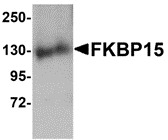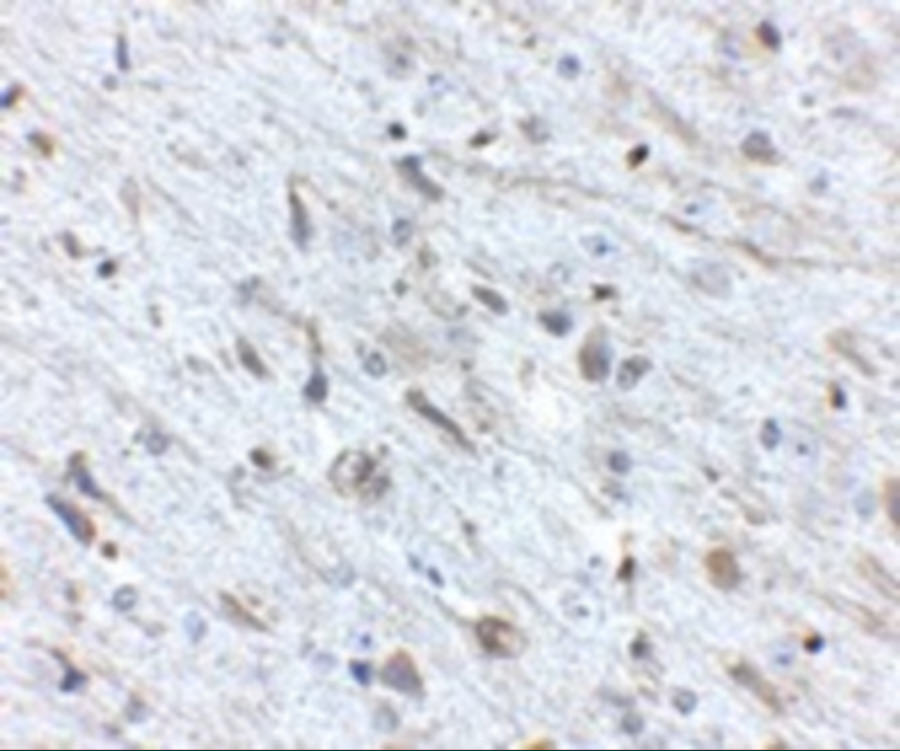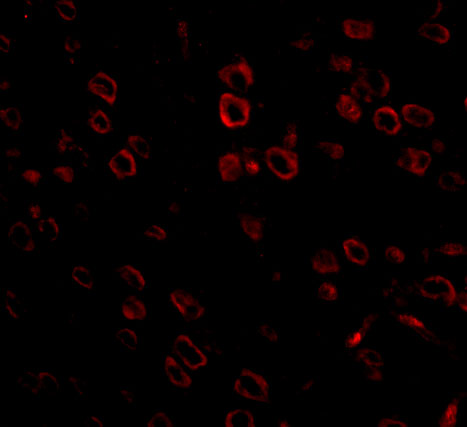FKBP15 Antibody
| Code | Size | Price |
|---|
| PSI-5135-0.02mg | 0.02mg | £150.00 |
Quantity:
| PSI-5135-0.1mg | 0.1mg | £449.00 |
Quantity:
Prices exclude any Taxes / VAT
Overview
Host Type: Rabbit
Antibody Isotype: IgG
Antibody Clonality: Polyclonal
Regulatory Status: RUO
Applications:
- Enzyme-Linked Immunosorbent Assay (ELISA)
- Immunofluorescence (IF)
- Immunohistochemistry (IHC)
- Western Blot (WB)
Images
Documents
Further Information
Additional Names:
FKBP15 Antibody: FKBP133, PPP1R76, KIAA0674, FK506-binding protein 15, 133 kDa FK506-binding protein, FKBP-15
Application Note:
FKBP15 antibody can be used for detection of FKBP15 by Western blot at 1 μg/mL. Antibody can also be used for immunohistochemistry starting at 2.5 μg/mL. For immunofluorescence start at 20 μg/mL.
Antibody validated: Western Blot in mouse samples; Immunohistochemistry in mouse samples and Immunofluorescence in mouse samples. All other applications and species not yet tested.
Antibody validated: Western Blot in mouse samples; Immunohistochemistry in mouse samples and Immunofluorescence in mouse samples. All other applications and species not yet tested.
Background:
FKBP15 Antibody: FKBP15, also known as FKBP133, is a member of the FK506-binding protein family, a group of proteins initially identified as immunophilins, targets for the immunosupressant drugs FK506 and Rapamycin. FKBP15 is expressed in the developing nervous system and contains a domain similar to Wiskott-Aldrich syndrome protein homology region 1 (WH1) in addition to the FK506-binding protein motif. FKBP15 is distributed along the axonal shafts and partially co-localizes with F-actin in the growth cones of dorsal root ganglion neurons; overexpression of FKBP15 resulted in the number of filopodia in transfected neurons, suggesting that FKBP15 modulates growth cone behavior. FKBP15 has also been shown to associate with both microtubules and the actin filament systems and disruption of its expression by RNAi resulted in delayed transport of early endosomes in HeLa cells indicating that FKBP15 is also involved in the transport of early endosomes. At least three isoforms of FKBP15 are known to exist.
Background References:
- Nakajima O, Nakamura F, Yamashita N, et al. FKBP133: A novel mouse FK506-binding protein homolog alters growth cone morphology. Biochem. Biophys. Res. Comm.2006; 346:140-9.
- Snyder SH, Lai MM, and Burnett PE. Immunophilins in the nervous system. Neuron1998; 21:283-94.
- Viklund I-M, Aspenstrom P, Meas-Yedid V, et al. WAFL, a new protein involved in regulation of early endocytic transport at the intersection of actin and microtubule dynamics. Exp. Cell Res.2009; 315:1040-52.
Buffer:
FKBP15 Antibody is supplied in PBS containing 0.02% sodium azide.
Concentration:
1 mg/mL
Conjugate:
Unconjugated
DISCLAIMER:
Optimal dilutions/concentrations should be determined by the end user. The information provided is a guideline for product use. This product is for research use only.
Immunogen:
FKBP15 antibody was raised against a 15 amino acid synthetic peptide from near the amino terminus of human FKBP15.
The immunogen is located within amino acids 30 - 80 of FKBP15.
The immunogen is located within amino acids 30 - 80 of FKBP15.
NCBI Gene ID #:
23307
NCBI Official Name:
FK506 binding protein 15, 133kDa
NCBI Official Symbol:
FKBP15
NCBI Organism:
Homo sapiens
Physical State:
Liquid
Protein Accession #:
NP_056073
Protein GI Number:
150010552
Purification:
FKBP15 Antibody is affinity chromatography purified via peptide column.
Research Area:
Neuroscience
Swissprot #:
Q5T1M5
User NOte:
Optimal dilutions for each application to be determined by the researcher.
Related Products
| Product Name | Product Code | Supplier | FKBP15 Peptide | PSI-5135P | ProSci | Summary Details | |||||||||||||||||||||||||||||||||||||||||||||||||||||||||||||||||||||||||||||||||||||||||||||
|---|---|---|---|---|---|---|---|---|---|---|---|---|---|---|---|---|---|---|---|---|---|---|---|---|---|---|---|---|---|---|---|---|---|---|---|---|---|---|---|---|---|---|---|---|---|---|---|---|---|---|---|---|---|---|---|---|---|---|---|---|---|---|---|---|---|---|---|---|---|---|---|---|---|---|---|---|---|---|---|---|---|---|---|---|---|---|---|---|---|---|---|---|---|---|---|---|---|---|---|





